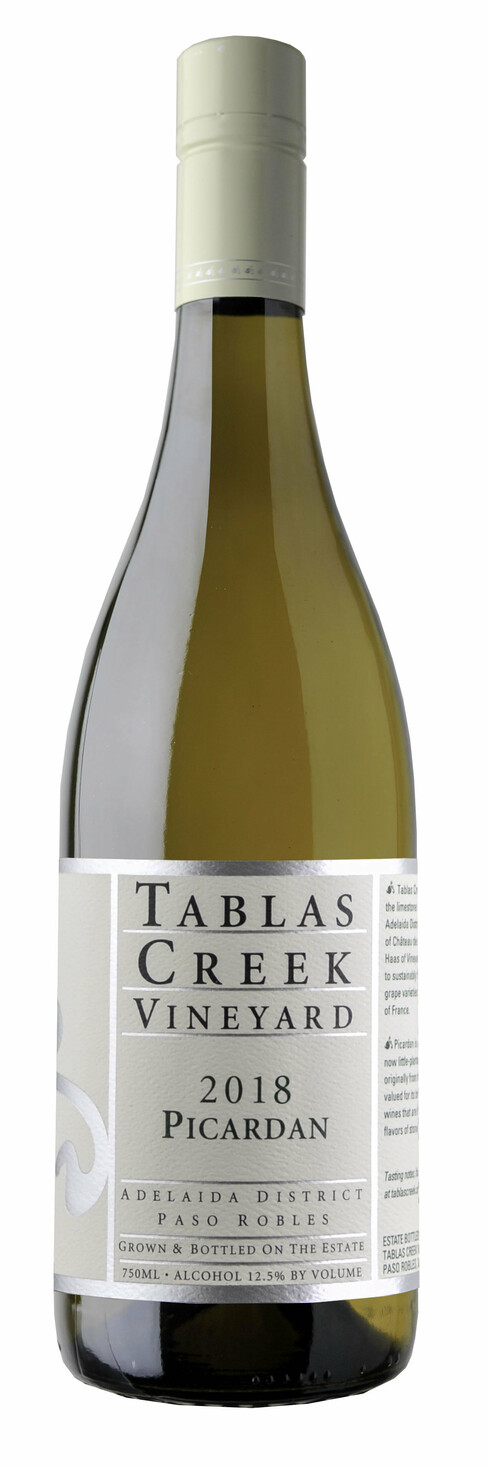
2018 Picardan
It looks like there was a problem contacting the store. Please try reloading your browser. If the problem persists try contacting us at orders@tablascreek.com
The Tablas Creek Vineyard 2018 Picardan is our third varietal bottling of this unique estate-grown varietal, propagated from budwood cuttings from the Château de Beaucastel estate.
-
92 Points; "Concentrated yet lively as well, showing firm tension on a long, sappy finish": Vinous (Feb. 2020)
-
91 Points; "Beautiful palate entry with lean water-like freshness." purely domestic wine report (Jan. 2020)
-
90-92 Points; "broad and slightly oily in the mouth, with great intensity, juicy acidity and a long, intensely perfumed finish.": Wine Advocate (Oct. 2019)
Tasting Notes
Picardan is on the nose reminiscent in many ways of Picpoul; there are aromas of green tea, mint, citrus leaf, and a wet rock minerality. On the palate, electric with citrus flavors, with an initial punch of lime juice, then softening a touch to show flavors of creamy minerality and lemon drop. The finish is long, with flavors of jasmine, petrichor, sweet herbs, and saline minerality.
Technical Details
Appellation
- Adelaida District Paso Robles
Technical Notes
- 13.0% Alcohol by Volume
- 125 Cases Produced
Blend
- 100% Picardan
Recipes & Pairings
Recipe Suggestions
Food Pairings
- Mussels Marinière
- Green salads with avocado and citrus dressing
- Scallops
- Light-fleshed fish (halibut, sole) with tropical salsa
Production Notes
Picardan is one of the Rhone's most obscure white grapes, permitted in Chateauneuf du Pape but with a total footprint in France of just over one acre, although it was apparently more common before phylloxera's arrival in the 19th century. We imported it into the United States in 2003 as part of our goal to have all the Chateauneuf du Pape varieties. It was released to us in 2012, and we planted a half-acre in 2013. Its first harvest was 2016.
The Picardan grapes were grown on our certified organic and biodynamic estate vineyard.
The 2018 vintage saw an almost ideal balance of vine health and stress, as is often the case with the first dry year after a very wet one. Although rainfall was just 70% of normal, the rains came late, delaying the onset of bud-break and the beginning of the growing season. The cool weather continued most of the year, punctuated by a six-week heat wave in July and early August. But temperatures moderated before picking began, and harvest proceeded under slightly cooler than normal conditions, allowing us to pick without stress and producing fruit (and wines) with intense flavors and good balancing acidity.
The fruit was whole cluster pressed, and fermented with native yeasts in a small variable capacity stainless steel fermenter until bottling in June 2019.